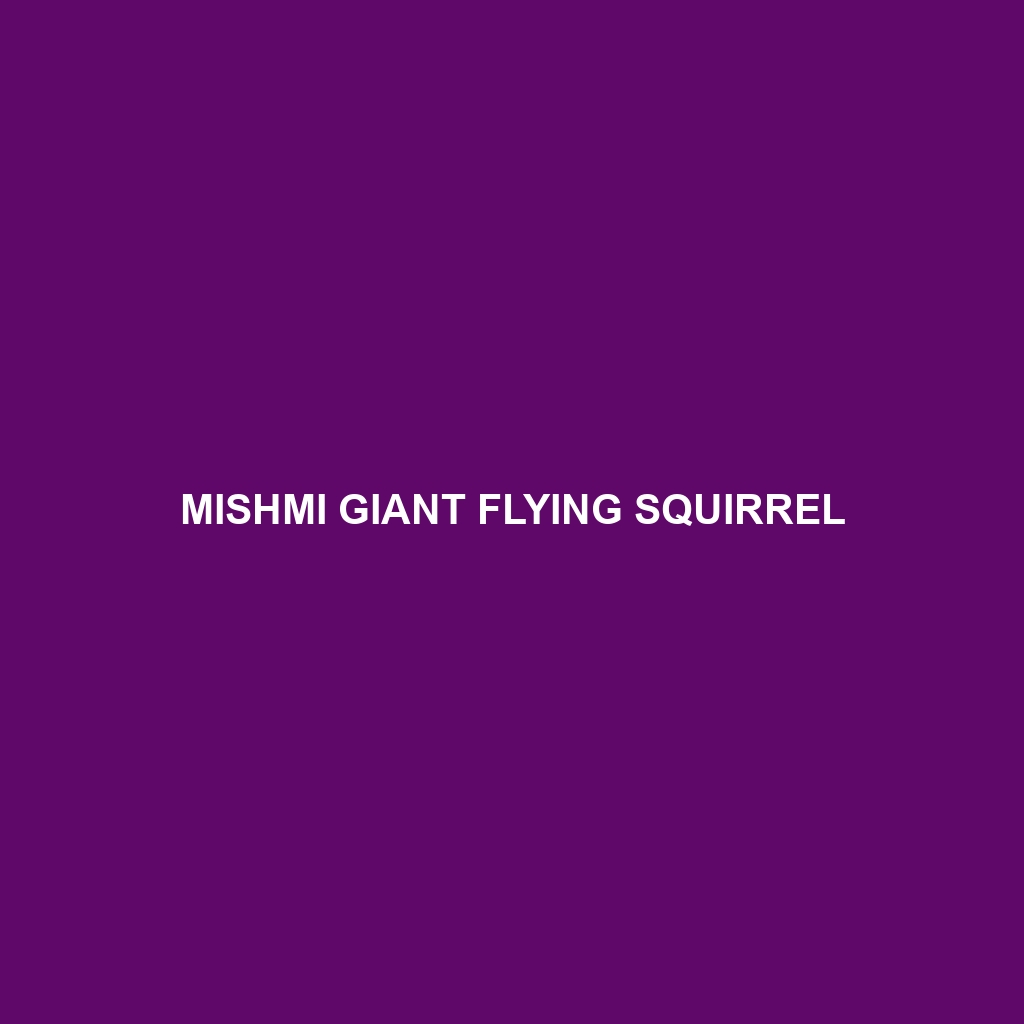Mishmi Giant Flying Squirrel
Common Name: Mishmi Giant Flying Squirrel
Scientific Name: Giant Flying Squirrel
Habitat: The Mishmi Giant Flying Squirrel is primarily found in the mountainous regions of northeastern India, particularly in the Arunachal Pradesh state. They inhabit broadleaf and mixed forests, where dense canopy cover provides essential shelter and resources. These areas are characterized by high humidity and ample rainfall, contributing to a rich biodiversity that supports this unique species.
Physical Characteristics: The Mishmi Giant Flying Squirrel is notable for its impressive size, with adults measuring up to 1 meter in length, including their bushy tail. They exhibit a striking appearance with dark brown to grayish fur, complemented by lighter underbellies. Their large eyes are adapted for nocturnal activities, while their elongated, gliding membranes stretching from their wrists to ankles allow them to maneuver through the forest canopy with ease. The distinctive flaps of skin and their fluffy tails aid in gliding and balance during their arboreal lifestyle.
Behavior: These squirrels are primarily nocturnal, becoming active after dusk. They are known for their gliding abilities, which they utilize to travel between trees in search of food and mates. Social behavior includes vocalizations and grooming, which strengthens bonds among individuals. During the day, they tend to rest in tree hollows or dense foliage, emerging at night to forage for food. Their territorial nature prompts them to establish and defend areas rich in resources, making them an interesting subject of study for animal behaviorists.
Diet: The Mishmi Giant Flying Squirrel is herbivorous, primarily feeding on fruits, nuts, seeds, and tree bark. They play a crucial role in seed dispersal, which is fundamental for the regeneration of forest ecosystems. Their feeding habits are often linked to the seasonal availability of food sources, making them adaptable foragers within their habitat, further enhancing their contributions to the ecological balance.
Reproduction: The reproductive habits of the Mishmi Giant Flying Squirrel include a breeding season that typically occurs during the warmer months. Females give birth to one or two offspring after a gestation period of approximately 60 days. The young are born hairless and blind but develop quickly. Parental care is significant, with the mother primarily responsible for rearing the young until they are sufficiently developed to venture out on their own.
Conservation Status: The Mishmi Giant Flying Squirrel is currently classified as vulnerable due to habitat loss from deforestation and human encroachment. Conservation efforts are essential to protect their natural habitats and prevent further decline in their populations. Engaging in sustainable forestry practices and habitat restoration are vital steps in ensuring their survival.
Interesting Facts: One fascinating aspect of the Mishmi Giant Flying Squirrel is its ability to glide over 150 meters in a single leap. This talent not only aids in evasion from predators but also allows for efficient navigation in its complex forest environment. Another interesting fact is that these squirrels have been observed engaging in social grooming, an activity that helps strengthen community bonds and maintain social structure.
Role in Ecosystem: The Mishmi Giant Flying Squirrel plays a significant role in its ecosystem as both a seed disperser and a prey species for larger carnivores. By feeding on fruits and nuts, they contribute to the propagation of various plant species, supporting forest diversity. Additionally, their presence aids in maintaining the ecological balance, as they serve as vital prey for birds of prey and other carnivorous animals in their habitat.
